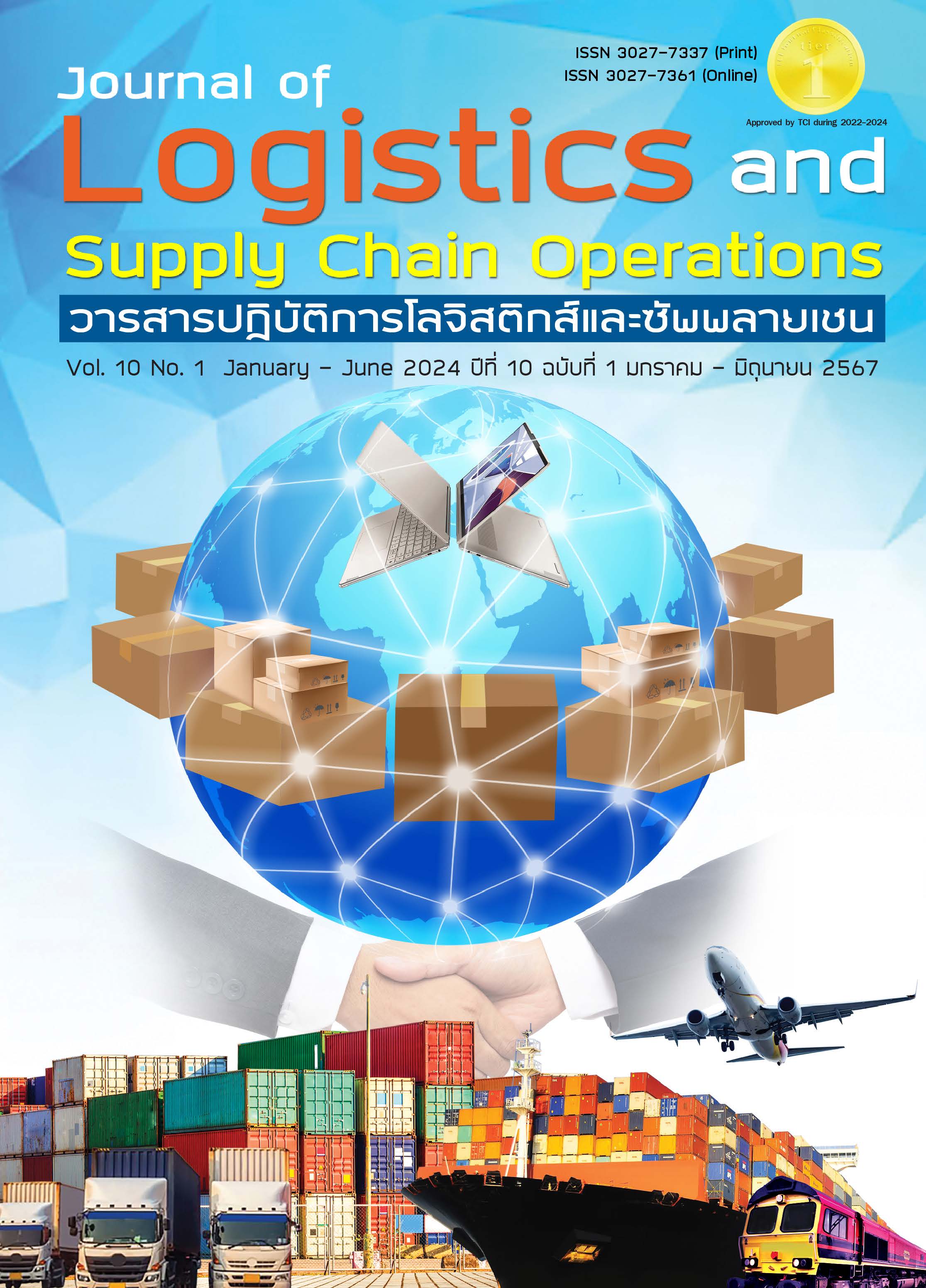A Study of Bus Stop Shelter Optimal Location Analysis by using GIS: A Case Study at Highway No. 3233 Nakhon Chai Si – Don Tum
DOI:
https://doi.org/10.53848/jlscc.v10i1.266154Keywords:
Geographic information system, Bus stop shelter, Analytic hierarchy processAbstract
The objectives of this research were 1) to study the factors affecting the selection of suitable locations for the construction bus stop shelter. 2) To study and apply the Arc GIS program to participate in the analysis and present the result in determining the appropriate location. 3) To study and compare the analysis results from the application of the ArcGIS program with the actual conditions where there in the field. By applying the Arc GIS program to analyze the appropriate location to build a bus stop shelter. A case study of Highways no.3233 Nakhon Chai Si - Don Tum by data analysis combined with the analytic hierarchy process from the interviewing result of experts in the field of highway construction and maintenance control 26 people. Analyze the results of the questionnaire in order of the priorities of major and minor factors, giving weight to the importance of the factors. The data was analyzed to arrange the appropriate location and display on the map according to the criteria. There are 10 sections in Highways no.3233 Nakhon Chai Si - Don Tum analyzes data every 100 meters. 92 locations were ranked in order of suitability for the construction bus stop shelter as follows: The maximum suitable location consists of 39 locations; the medium suitable location consists of 22 locations and the Minimum suitable location is 31 suitable locations consisting of 39 locations. From the comparison of the suitability suitable location consists of 39 locations with the actual conditions where there is a construction of a bus stop shelter in the field. It was found that construction areas for 32 bus stops shelter in the field where 14 places were suitable, 8 were moderately suitable, and 10 were less suitable. To use the information obtained as a basis and guidelines for improvement create the most benefit to the public and road user.
References
กรมทางหลวง. (2563). คู่มือประกอบการใช้แบบมาตรฐาน 2015 Revision. กรุงเทพฯ: กรมทางหลวง.
กสิณ รังสิกรรพุม. (2565). การวิเคราะห์การตัดสินใจสำหรับงานวิศวกรรม. พิมพ์ครั้งที่ 1. กรุงเทพมหานคร:สำนักพิมพ์จุฬาลงกรณ์มหาวิทยาลัย.
ชุติมา เจิมขุนทด. (2554). การประยุกต์ใช้ระบบสารสนเทศภูมิศาสตร์เพื่อศึกษาระดับการเข้าถึงในการเดินทางโดยระบบขนส่งสาธารณะ: กรณีศึกษาเทศบาลนครราชสีมา. วิทยานิพนธ์วิศวกรรมศาสตร์มหาบัณฑิต สาขาวิศวกรรมโยธา, มหาวิทยาลัยเทคโนโลยีสุรนารี.
ปุณยนุช รุธิรโก และชนิษฎา ชูสุข. (2562). การประยุกต์ระบบสารสนเทศภูมิศาสตร์ในการหาพื้นที่ที่เหมาะสมเพื่อพัฒนาเป็นพื้นที่สีเขียวเพื่อนันทนาการในเขตเทศบาลนครหาดใหญ่และเทศบาลเมืองคอหงส์ อำเภอหาดใหญ่ จังหวัดสงขลา. วารสารวิทยาศาสตร์และเทคโนโลยี, 21(2), 1-20.
รัตนาภรณ์ บุญมี. (2561). การวิเคราะห์เปรียบเทียบระดับการเข้าถึงของระบบขนส่งสาธารณะปัจจุบันและแผนแม่บทอนาคตในอำเภอเมืองพิษณุโลก. วิทยานิพนธ์วิทยาศาสตร์บัณฑิต สาขาภูมิศาสตร์,มหาวิทยาลัยนเรศวร.
สุพรชัย อุทัยนฤมล. (2560). เอกสารประกอบการสอนวิชา Geographic Information System in Transportation. กรุงเทพฯ: มหาวิทยาลัยเทคโนโลยีพระจอมเกล้าพระนครเหนือ.
สุเพชร จิรขจรกุล. (2560). เรียนรู้ระบบสารสนเทศภูมิศาสตร์ด้วยโปรแกรม ArcGIS Desktop 10.5.พิมพ์ครั้งที่ 1. นนทบุรี: บริษัท เอ.พี.กราฟิคดีไซน์และ การพิมพ์ จำกัด.
สำนักนโยบายและแผนการขนส่งและจราจร. (2559). ร่างรายงานคู่มือมาตรฐานด้านการจัดการระบบจราจร เรื่องการจัดระบบจราจรโครงการจัดทำแผนพัฒนามาตรฐานด้านการจัดระบบจราจรในเมืองภูมิภาค.กรุงเทพฯ: สำนักนโยบายและแผนการขนส่งและจราจร.
อุทัย สุขสิงห์. (2548). การจัดการระบบฐานข้อมูลสารสนเทศภูมิศาสตร์(GIS) ด้วยโปรแกรม ArcView3.2a-3.3. พิมพ์ครังที่ 3. กรุงเทพฯ: สำนักพิมพ์ ส.ส.ท.
Mohamed, A. Foda., & Ahmed O. Osman. (2010). Using GIS for measuring transit stop Accessibility considering actual pedestrian road network. Journal of Public Transportation, 13(4), 1-40.
Saaty, T.L. (2013). Analytical hierarchy process. In Encyclopedia of operations research and management science. Boston: Springer.
Transport for London. (2010). Measuring public transport accessibility levels. Retrieved 24 December 2022, From: https://s3-eu-west-1.amazonaws.com/londondatastore- upload/PTAL-methodology.pdf.



